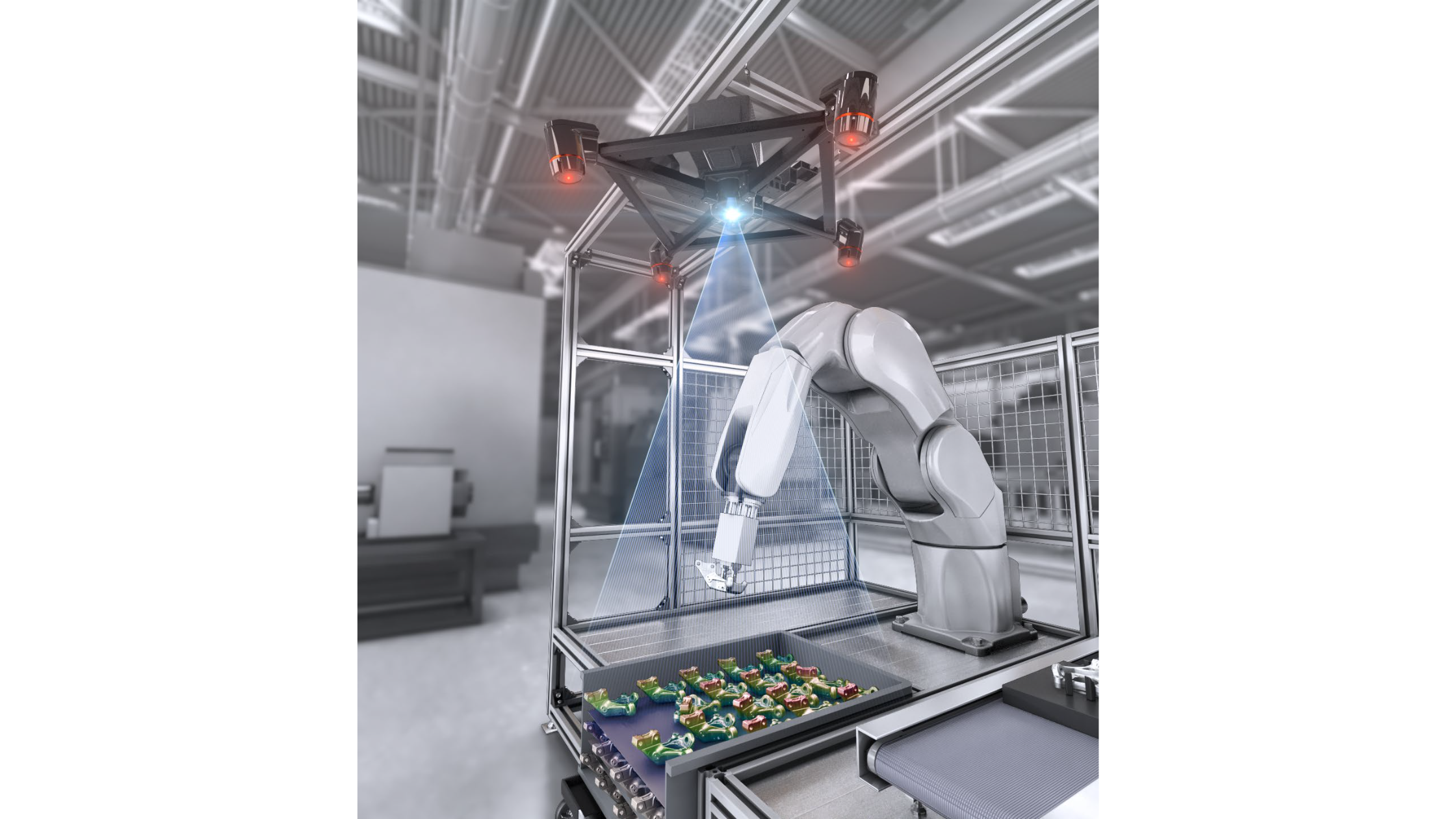Vision systems for robotics are critical technologies that enable robots to perceive, analyze, and interact with their environment. These systems are essential for applications that require high precision and adaptability, such as object recognition, navigation, and quality inspection. Here’s a detailed overview of vision systems in robotics:
Components of Vision Systems
1. Cameras
- 2D Cameras: Capture flat images, suitable for basic tasks like barcode reading and simple object detection.
- 3D Cameras: Provide depth information, crucial for tasks requiring spatial awareness, like picking objects from a bin.
- Multispectral Cameras: Capture data beyond visible light, useful for detecting properties like chemical composition or freshness in food processing.
- Structured Light: Projects a known pattern of light (e.g., grid or stripes) onto the object to measure deformations and generate 3D data.
- Ring Lights, Backlights, and Dome Lights: Used to eliminate shadows and enhance contrast in images.
- Depth Sensors: Measure the distance to objects, aiding in 3D mapping and obstacle avoidance.
- Color Sensors: Detect different colors for sorting and inspection tasks.
- CPUs and GPUs: Process visual data and run algorithms for object recognition, tracking, and decision-making.
- FPGAs and ASICs: Custom hardware for specific image processing tasks, offering high speed and efficiency.
Key Technologies and Techniques
1. Image Processing
- Filtering and Enhancement: Techniques like noise reduction, edge detection, and contrast adjustment to improve image quality.
- Segmentation: Dividing an image into parts for easier analysis, such as isolating objects from the background.
- Object Detection: Identifying and locating objects within an image using techniques like template matching, feature extraction, and machine learning models.
- Object Recognition: Classifying detected objects into predefined categories.
- Pattern Recognition: Identifying patterns and regularities in data, useful for tasks like defect detection in manufacturing.
- Deep Learning: Neural networks, particularly convolutional neural networks (CNNs), are used for tasks like image classification, object detection, and image segmentation.
- Reinforcement Learning: Training robots to make a sequence of decisions based on visual input to achieve specific goals.
- Stereo Vision: Using two cameras to simulate human binocular vision, calculating depth by comparing the two images.
- Time-of-Flight (ToF): Measuring the time it takes for a light signal to bounce back from an object to determine its distance.
- Structured Light and Laser Scanning: Projecting light patterns and analyzing distortions to create detailed 3D models.
Applications in Robotics
1. Industrial Automation
- Quality Control: Inspecting products for defects, ensuring consistency and quality.
- Pick and Place: Identifying and picking objects from a conveyor belt or bin, crucial in packaging and sorting.
- Navigation: Using vision systems to detect obstacles, read signs, and navigate complex environments.
- Object Avoidance: Ensuring safe movement by detecting and avoiding obstacles.
- Human-Robot Interaction: Recognizing and interpreting human gestures and expressions to interact effectively.
- Environmental Mapping: Creating maps of surroundings for navigation in domestic or commercial settings.
- Surgical Assistance: Enhancing precision in surgical procedures through detailed visualization and guidance.
- Diagnostics: Analyzing medical images to assist in diagnosis and treatment planning.
Challenges and Future Directions
1. Computational Complexity
- Real-time processing of high-resolution images and 3D data requires significant computational power, driving the need for more efficient algorithms and hardware.
- Vision systems must perform accurately in diverse and challenging conditions, such as varying lighting and occlusions.
- Seamless integration with other sensory and robotic systems to create cohesive and intelligent robotic solutions.
- Continued development in AI and machine learning will enhance the capabilities of vision systems, making them more adaptable and intelligent.
- Developing smaller, more affordable vision systems to expand their use across various applications, including consumer electronics and wearable devices.
About ABCO Automation
For nearly five decades, ABCO Automation has earned the trust of our customers as a go-to partner for Custom Automation Solutions, Robotic Automation, Contract Manufacturing, Standard Product Solutions, and Engineering Services. An employee-owned, North Carolina-based corporation, ABCO is driven by improving the profitability and quality of life for our customers and their teams through innovation and technology advancements. For more information, please contact ABCO Automation at media@goabco.com.


.png)
-1.png)
.png)